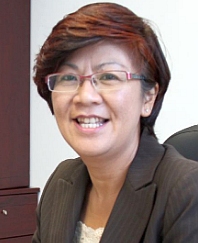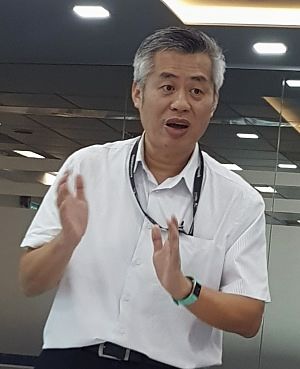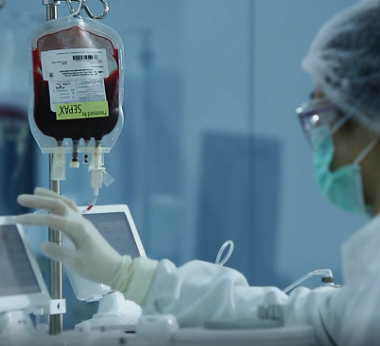Cordlife Group had a good year in 2019, generating much higher profit and cash. Tan Poh Lan, CEO of Cordlife since Feb 2019. It reported net profit of $6.5 million (+331% y-o-y) and added $11.0 million to its net cash position which reached S$49.7 million, or 46% of its market cap. Tan Poh Lan, CEO of Cordlife since Feb 2019. It reported net profit of $6.5 million (+331% y-o-y) and added $11.0 million to its net cash position which reached S$49.7 million, or 46% of its market cap.The Board has recommended a final dividend of 1 cent per share. This represents a payout of 39.2% of the net profit. The positive FY19 performance marks Tan Poh Lan's first year as Group CEO. She took on the role from end-Feb 2019, transitioning from being Group COO, a post she had held for nearly three years. Prior to that, she occupied top management roles in hospitals in Singapore and Vietnam, which were experiences with lots of contacts that seem to be aiding in her current role. |
Cordlife is the No.1 private cord blood bank player in Singapore which, along with Hong Kong and India, comprise its three biggest markets, accounting for about 75% of revenue. CFO Choo Boon Yong.
CFO Choo Boon Yong.
NextInsight file photoThe dynamics of each market are different.
Customers in Singapore in FY2019 opted for higher value price plans.
They were also more likely to purchase pre-natal testing services which analyse foetal DNA in the mother's blood to detect abnormalities such as Down Syndrome.
This is the most sought-after test in Cordlife's diagnostics segment.
This segment's contribution is relatively small but growing (see table):
|
Segment results |
|||
|
S$'000 |
Banking |
Diagnostics |
Total |
|
FY2019 |
60,009 |
1,570 |
61,579 |
|
Segment profit |
5,473 |
235 |
5,708 |
|
12M2018 |
60,460 |
932 |
61,392 |
|
Segment profit |
1,927 |
(44) |
1,883 |
|
Source: Cordlife |
|||
 Cord blood is tested and processed at Cordlife prior to being cryopreserved and stored for 18-21 years.
Cord blood is tested and processed at Cordlife prior to being cryopreserved and stored for 18-21 years.
Screenshot from Cordlife videoCordlife attracted more business in India, Indonesia and the Philippines.
The metric is "new samples" stored (be it cord blood or cord tissue or cord lining) as Cordlife has decided to do away with the term "deliveries" which had previously been often misconstrued as physical births of babies.
Revenue-wise, India's contribution decreased. This was due to a higher take-up of lower-priced plans and cord tissue plans in FY2019.
There was a decrease in new samples stored in Hong Kong and Malaysia.
FY2019 gross profit inched up 3.5% y-o-y to S$39.7 million, yielding a gross margin of 64.5% (+2 percentage points), which is a blend of different margins achieved in different markets.
(Umbilical cord blood stem cells are a more primitive form of stem cells and possess a higher proliferation and expansion potential and are more tolerant to tissue mismatches than adult stem cells.) For instance: • In Indonesia, Cordlife opened the largest stem-cell banking facility in the country in May 2019. It is AABB-accredited (formerly known as the American Association of Blood Banks). Boasting 7X more stem-cell storage capacity than its previous facility, the new facility also comprises dedicated laboratory areas intended to serve growing demand for diagnostic and genetic testing. • In Bangladesh, Cordlife had in August 2019 appointed a marketing agent to reach out to the middle-class and affluent in the country. |
| Proposed merger with CGBC still pending |
With regards to a potentially massive M&A, on 4 June 2019, Cordlife announced an indicative, non-binding and conditional proposal for a merger with Global Cord Blood Corporation which is listed in New York. This is still pending.
GCBC is China's largest operator of cord blood banking services. While there are major hurdles to overcome first, the impact of a successful merger cannot be over-emphasised for Cordlife.
It would result in a very profitable, very cash-rich, very diversified Cordlife. In fact, Cordlife would become the biggest cord blood bank player in the world
Background: Cord blood contains stem cells that have been proven useful in treating over 80 conditions, including leukaemia, lymphoma and thalassemia major. Since 1988, doctors have used cord blood stem cells to treat more than 40,000 patients suffering from diseases such as certain cancers like leukaemia, blood disorders as well as those in clinical trials. For more info, click here. How a mother's cord blood is extracted, and processed for storage for 18 or 21 years.
How a mother's cord blood is extracted, and processed for storage for 18 or 21 years.
The 4Q19 Powerpoint presentation material is here.





